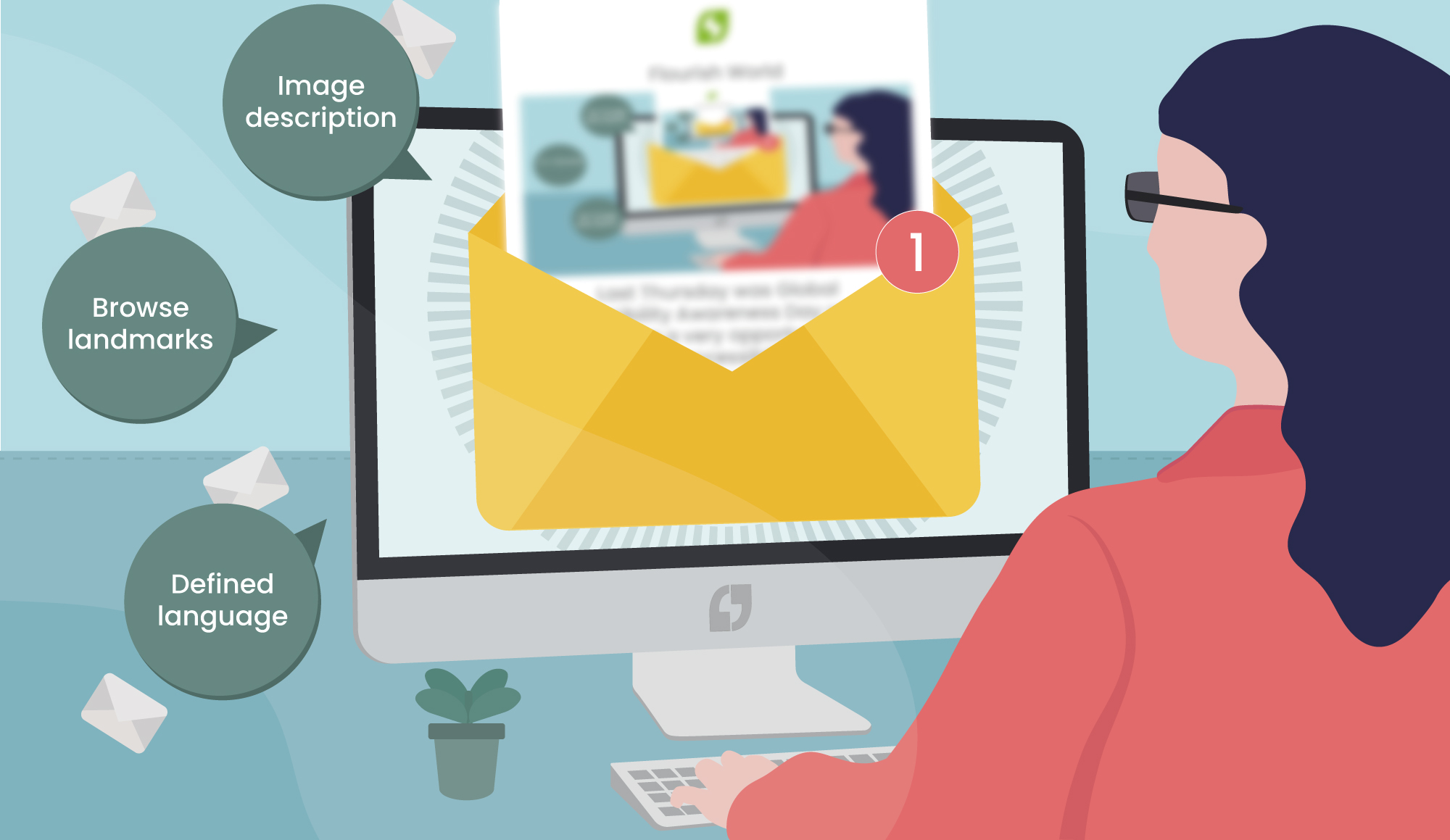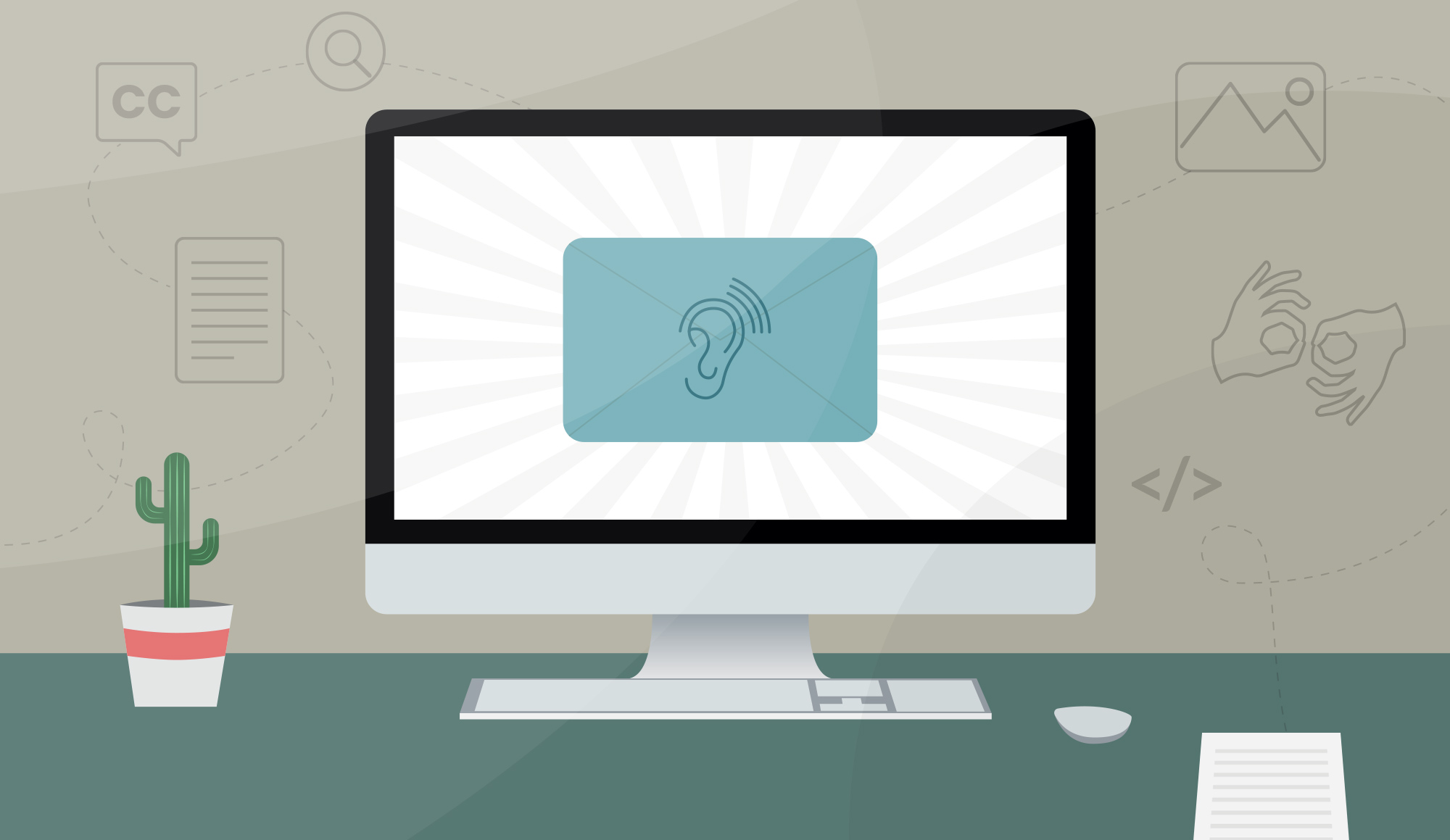Accessibility in email, let's start with vision
Thursday May 21 2020 was Global Accessibility Awareness Day which seems like a very opportune time to talk about accessibility in email, a subject we’re very passionate about here at Flourish.
Accessibility in email isn’t something new, it was actually built into the very foundations of the platform. The first commercial email system (MCI Mail), to be connected to the Internet, was developed in the late 1980s by a team which included Dr Vint Cerf, one of the ‘fathers of the Internet’. Dr Cerf is hard of hearing and his wife is profoundly deaf, they couldn’t use a telephone to communicate, so they used email instead.
So what does this mean for us today?
Despite being a driving force in the early days of email, the digital space still isn’t accessible to everyone. And that’s a problem. Last year in the UK, of all the adults identifying themselves as ‘recent internet users’, more than 10 million also identified themselves as having a disability. To put that into perspective that means around 78% of all disabled adults are internet users. (Source: ONS Internet users, UK: 2019).
Not all disabilities are a barrier to internet experience of course, but many do and if businesses don’t make provision it means they reduce reach and potential customers.
Fortunately there are organisations like Webaim whose mission is to help businesses make their web content accessible to people with disabilities. Webaim recently audited the world’s top 1 million websites. The audit revealed a stunning truth – most of the websites FAILED accessibility testing. If a similar audit was completed for email, without a doubt nearly all of them would fail.
Over this mini-series of blogs we’ll cover 4 different disability categories which Webaim state have specific content design requirements. These are:
1 Vision – Blindness, low vision, colour-blindness.
2 Auditory – Deafness and hard-of-hearing.
3 Motor – Inability to use a mouse, slow response time, limited fine motor control.
4 Cognitive – Learning disabilities, distractibility, inability to remember or focus on large amounts of information.
First up, let’s look at making improvements for the visually impaired
Meet Ashleigh, a partially sighted screen reader user:
“I couldn’t buy my sister the present she really wanted for her birthday because none of the fields were labelled on the website.”
Ashleigh is a persona created by the UK government to help us better understand our audiences.
However I’m sure we can all imagine the frustration Ashleigh would feel if your beautifully designed email doesn’t work in his screen reader.
Unfortunately not many marketing emails cater for accessibility needs. We think that It’s an honour to be invited into someone’s inbox, so the least we can do is make some simple changes.
Here are 4 things you can do to make your emails screen reader friendly and enhance the experience of visually impaired recipients
Describe your images
To prevent screen readers from reading out the file name all images should have an alt attribute even if it is blank (alt=””). Images that do contain useful content should have descriptive alt text.
Label your Tables
For email to render correctly in Outlook developers use tables within tables. However, tables aren’t accessible, especially not when using a screen reader as each row and cell of a table are read out <insert example>.
This can be easily fixed by adding role=”presentation” attribute on every layout table.
Define a language
Your email recipient might not speak the same language as you, so their computer might not be set to the same language as yours. If you do not define a language, screen readers may use the default language – the result? Gobbledygook that the recipient won’t understand. See this example from Email Developer Remi Parmentier:
Use Semantic code
A sighted person can scan an email and find relevant content, however, a screen reader can’t do that for a visually impaired person. Using semantic code enables a screen reader to get a picture of the layout and hierarchy of an email. Including the <h> tag creates ‘browse landmarks’ so a visually impaired user can get to the content they’re interested in.
At Flourish we always build emails with accessibility needs in mind. Our templates are regularly tested in screen readers and our designers check colours with contrast checking tools. It means that our emails can be accessed by the vast majority of recipients.
If you’re concerned the accessibility of your emails is diminishing their reach, get in touch with our Managing Partner Ian Reeves. We’ll be happy to test them for you and provide our recommendations.



